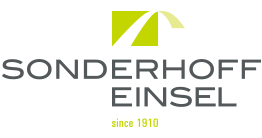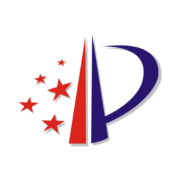Summary of Measures on Administrative Adjudication and Mediation of Patent Disputes in China
I. Overview
The “Measures on Administrative Adjudication and Mediation of Patent Disputes” (hereinafter referred to as “Measures”) came into effect on February 1, 2025. The “Measures” are composed of five parts: General Provisions, Administrative Adjudication, Administrative Mediation, Legal Liability, and Supplementary Provisions, and are consistent with the China Patent Law (2020 Revised Law) and the Patent Law Administrative Regulations (2023 Revised Regulations ), as well as the previously unorganized “Measures on Patent Administration Enforcement”, “Measures on Administrative Adjudication of Major Patent Infringement Disputes”, “Measures on Administrative Adjudication of Pharmaceutical Patent Disputes”. In order to further clarify the standards and procedures for resolving patent disputes through administrative means, and to solve the new problems that have emerged in patent practice, such as pharmaceutical patent disputes and open licensing disputes, China will strengthen intellectual property protection and bring it in line with international standards. China is strengthening its intellectual property protection and bringing it in line with international standards.
China adopts the “dual track system” in which civil litigation (judicial route) and administrative adjudication (administrative route) are used in parallel as means of resolving infringement disputes, and it is characteristic that the parties can freely choose the route according to their purposes by comparing the advantages and disadvantages of each route. Compared to the judicial route, the administrative route is widely used for its advantages such as high efficiency, low cost, professionalism, and simplicity of procedures. In this article, we will discuss the main contents of the “Measures” and interpret some of the key provisions to examine how companies can use the system to better protect their rights and avoid abuse of patent rights by malicious intent.
II. Major Provisions of the “Measures”
(1) Introduction of new system
- Reflecting the amended Patent Law
Establishes administrative adjudication of serious patent infringement disputes (Articles 55-58)
Establishment of administrative adjudication of early resolution mechanism for pharmaceutical patent disputes (Articles 59-62)
Establishes administrative arbitration of patent licensing disputes (Articles 76-79)
Adds provisions on informatization construction and data management (Article 11).
Clarified the time limit for requesting adjudication (Article 19).
- Reflecting the amended Patent Law Implementation Regulations
Clarified the detailed regulations on administrative jurisdiction (Articles 6 -9)
Added provisions on electronic service of process (Article 10).
Improved standards for arbitration of employee inventions (Article 74).
- extraction of beneficial methods in practice
Extracting beneficial methods from the practice of administrative adjudication of major infringement disputes and early resolution mechanism of pharmaceutical patent disputes and introducing relevant provisions in the “Measures” (Articles 55-62).
(2) Improvement of norms on substantive procedures
- response to the requests of the case-handling body and parties
Added provisions on the addition of related parties (Articles 23-24)
Clarification of relevant requirements for oral hearings (Articles 26-27)
Introduction of technical investigation and technical expert opinion (Articles 52-53)
- Clarified the criteria for determining patent infringement
Clarified the scope of patent protection, the all-element principle, the estoppel principle, the dedication principle, and the same and equal infringement (Articles 38-42).
- further improvement of other norms
Improvements to the provisions on jurisdiction and the method of conclusion (Articles 6 to 9, Article 30).
Clarification of the specific circumstances for case discontinuance (Article 28)
Added provisions on handling of failure to decide and repeated infringement (Article 34).
(3) Optimization of procedures
- simplification of documents and procedures
Simplification of requirements for documents to be submitted by the parties (Articles 18 and 46)
- Optimization of procedures for acceptance, establishment of a case, investigation, and submission of evidence
Clarify requirements for making a case (Article 20)
Improve rules for allocation of burden of proof (Article 45)
- Improvement of measures related to avoidance, confidentiality and handling of entrusted cases
Specific rules for avoidance (Article 5)
Added provisions on handling of entrusted cases (Article 8).
Clarification of confidentiality responsibilities of parties (Article 82)
III. Explanation of Relevant Provisions
(1) Adoption of the collegial system (Articles 20 and 25)
The “Measures” clarifies that a collegial system shall be adopted in the handling of administrative adjudication cases. Article 20 of the “Measures” stipulates that when issuing a notice of case to a claimant, the enforcement department shall appoint three or more (odd number) persons to form a council to handle the patent infringement dispute at the same time. The council may decide to postpone the defense (Article 22 of the “Measures” ), conduct an oral hearing (Article 26 of the “Measures” ), conduct an online oral hearing (Article 27 of the “Measures” ), and conduct a technical opinion (Article 53 of the “Measures” ), among other matters.
In addition, Article 25 of the “Measures” stipulates that the collegial body shall fully deliberate on the findings of fact, the admissibility of evidence, legal responsibility, the application of law, and the results of the process, and render a decision by majority vote. The deliberation record must record the process and results of deliberation based on the facts, including the majority and dissenting opinions.
(2) Overseas Identification and Overseas Evidence (Articles 18 and 46)
The “Measures” improve the provisions on valid identity proof for foreigners, clarifying that “for foreigners who have obtained permanent residence status in China, their permanent residence certificate shall be valid identity proof. Based on the “Convention on the Non-Necessity of Authentication of Foreign Official Documents,” the “Measures” stipulate that “if there are special provisions for certification procedures in relevant treaties concluded by the People’s Republic of China, they shall be followed” to ensure fairness and efficiency in administrative adjudication and arbitration.
(3) Jurisdiction (Articles 6 and 9)
Article 6 states that patent infringement disputes shall be under the jurisdiction of the patent administration department of the place where the infringement occurred or the place of residence of the accused. If the administrative adjudication is requested in the place of residence of the respondent, it may not always be possible to avoid the local protection principle, etc. Therefore, overseas right holders may take advantage of the provision of Article 12 that the claimant is the patentee or interested party, and request adjudication through the interested party in the place of occurrence of the infringement. If there is an objection to jurisdiction, it is possible to file an objection within the reply period in accordance with Article 9 of the “Measures”. Within five days of receipt of the objection, the patent administration department must decide whether the case needs to be transferred or not.
(4) Standard Essential Patents (Article 30)
Standard essential patents are the focus of current market competition and an important means of improving industrial competitiveness. In the process of soliciting opinions, the “Measures” have attracted widespread attention and controversy regarding the application of standard essential patents. Although standard essential patents are still patents in nature and should not be excluded from the scope of application of the “Measures”, they are certainly unique and complex. Therefore, in the adjudication and arbitration of standard essential patents, it is stipulated to refer to the provisions on standard essential patents in relevant laws, regulations, and judicial interpretations (e.g., “Provisions on the Prohibition of Abusive Competition and Restrictions on Intellectual Property Rights”, “Antitrust Guidelines on Standard Essential Patents,” etc.).
(5) Provisional term of protection for divisional applications (Article 75)
The “Measures” stipulate that the publication date of a divisional application shall be based on the earlier publication date of the parent application and the divisional application. By bringing forward the starting point of the provisional term of protection of the divisional application, “providing protection in advance” is given to the scope of protection not covered by the parent application, and the right holder’s interests can be better protected.
(6) Time Limit Provisions (Articles 37 and 70)
The “Measures” stipulate that patent infringement disputes shall be closed within three months from the date of filing and may be extended within one month with the approval of the director of the patent administration department, depending on the complexity of the case. If the case is particularly complicated, it may be extended for up to two months. In the case of patent ownership dispute mediation, the case will be concluded within two months, and the case may be extended for up to one month with the approval of the director of the patent administration department, depending on the complexity of the case. Thus, the law clarifies that the administrative route has a shorter processing time than the judicial route, which ensures speed and efficiency.
(7) Response to warning letters (Article 13)
Article 13 of the “Measures” allows an enterprise that receives a warning letter of patent infringement to take countermeasures against the warning letter by sending a written request for an administrative ruling or a lawsuit to the warner, or by sending a written opinion of non-infringement to the warner. If the alerting party does not withdraw the warning or take legal measures within one month after receiving the written demand or written opinion, the alerted enterprise may request the administrative authority for an opinion on whether or not the infringement has been committed. This provision can effectively prevent the patentee from abusing the right of warning and ensure that the patent right is exercised reasonably.
(8) Administrative adjudication of major patent infringement disputes (Articles 55-58) and administrative adjudication for early resolution mechanism for pharmaceutical patent dispute (Articles 59-62)
In accordance with the 2020 Amendment to the Patent Law, Article 70, Paragraph 1 and Article 76, Paragraph 2 of the Patent Law, this “Measures” adds Section 4: Administrative Adjudication of Serious Patent Infringement Disputes and Section 5: Administrative Adjudication for early resolution mechanism for pharmaceutical patent dispute. In the draft of the Law, the Supplementary Provisions stated that the “Measures on Administrative Adjudication of Major Patent Infringement Disputes” and “Measures on Administrative Adjudication for early resolution mechanism for pharmaceutical patent dispute” would be abolished with the enforcement of the Law, but this was deleted in the Law which officially came into effect. However, the new version of the “Measures” has been deleted.
(9) Transitional Measures
The current Rules of the Department, “Measures for Patent Administrative Enforcement” (Bureau Order No. 71), has established relevant provisions for patent administrative adjudication and mediation in Chapter 2 “Patent Infringement Dispute Resolution” and Chapter 3 “Mediation of Patent Disputes”. In accordance with the principle that the new rules take precedence over the old rules, this “Measures” shall be applied to the relevant contents where the two rules are not in line with each other.
IV. Conclusion
The State Intellectual Property Office (CNIPA) has the highest level of examiners and experts in China, and its expertise is much higher than that of the courts, which means that the administrative decisions made by the CNIPA are very reliable. However, most administrative decisions in China are made by local government intellectual property bureaus, which vary in knowledge and expertise, and the standards for adjudication are not always stable.
Therefore, the implementation of the “Measures” is expected to play an important role in unifying the standards for adjudication and strengthening the position of the administrative route in parallel with the judicial route. It is necessary to keep a close eye on the implementation of this Law.
Source



